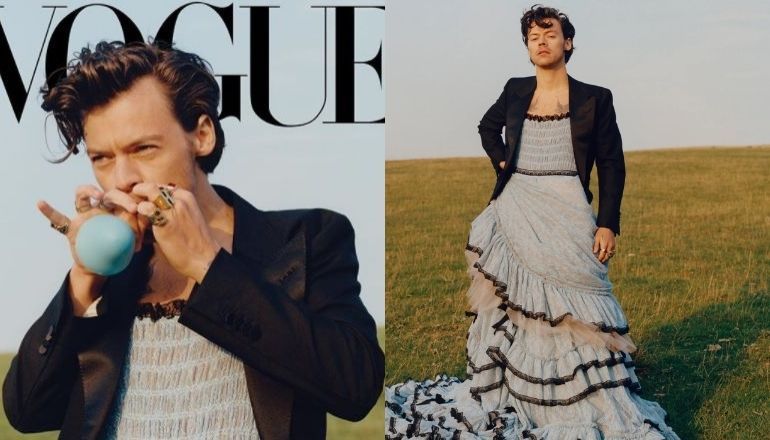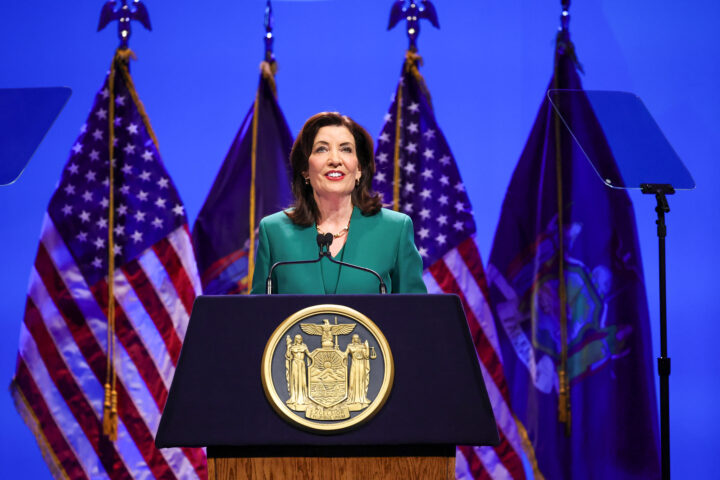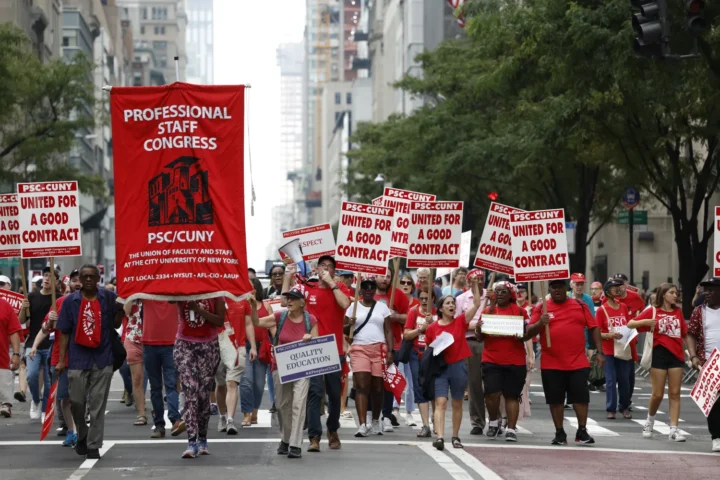On the cover of Vogue magazine’s December 2020 issue, Harry Styles appeared wearing a dress, causing conservatives to speak out against it and the public to note that he is not the first man to openly wear a dress.
Conservative commentator Candace Owens tweeted in response to the singer’s appearance in Vogue stating, “There is no society that can survive without strong men. The East knows this. In the west, the steady feminization of our men at the same time that Marxism is being taught to our children is not a coincidence. It is an outright attack. Bring back manly men.”
Due to the major backlash from conservatives like Owens, people have pointed out that Styles isn’t the first man to appear in a dress. Billy Porter was recently in a velvet tuxedo gown during the 2019 Oscars. Lil Nas X also dressed up as Nicki Minaj for Halloween.
Benjamin Strassfeld, a Media Studies professor at Queens College, gave his opinion on the matter. “American society tends to look harshly on any who dare disobey gender norms, and that is particularly true when men do so,” he added, “A vocal conservative subset of this country has long viewed the upholding of normative gender roles as essential to upholding not only the morals of society and even our democracy.”
The comparison of historical education to a Vogue cover is odd. Harry Styles is a cis-gendered male celebrity that simply wants to wear a dress. The only thing that we as a society should learn from it is that if you don’t want to date a man in a dress then don’t. Who are we to tell a person what they can and can’t wear?
Amy Herzog, QC professor of Media Studies noted there’s historical context to Styles’ fashion choice. “This isn’t new or sensational, and there’s a long history of male performers wearing women’s clothing,” said Herzog, adding, “… and there’s an even longer history of queer, trans, and drag performers, and particularly performers of color, who take far greater risks every day with their non-gender-conforming fashion.”
Though this isn’t necessarily new, since Harry Styles is young, popular, and photographed with a big venue, it’s being put in the spotlight. Herzog explained, “Sylvester’s (the singer) fashion statements in the 1970s, for example, were far more radical and strategic. But the mainstreaming of an image of a hugely popular, heterosexual male celebrity proudly wearing feminine clothing is an important and positive gesture, one that will mean a great deal to young people searching for visibility.”
Social conservatism in America is still quite common, particularly with respect to gender norms. The new generation is beginning to understand that the gender stereotypes we as a society are teaching our children is limiting their capacity to develop their personal abilities, as seen by the efforts of many progressives. One key thing to take away is that people like Harry Styles are becoming a perfect example of what it means to be yourself and that there is no gender in clothing.











